Do you have a question about the Technoline WS6650 and is the answer not in the manual?
| Brand | Technoline |
|---|---|
| Model | WS6650 |
| Category | Weather Station |
| Language | English |
Recommends setting up the outdoor sensor before configuring the weather station/clock.
Other settings are blocked when the clock is in RCC synchronization mode.
Temperature and humidity sensors may take up to an hour to acclimatize.
Instructions for installing the AC/DC adapter and an optional mirror finish.
Steps for installing AAA batteries and crucial safety warnings.
Guides on setting the initial weather pattern based on location.
How to set atmospheric pressure units and the closest sea level.
Setting the current weather situation and understanding pressure trends.
Details on automatic sync times and procedures for manual synchronization.
How to cancel synchronization and awareness of restrictions during the process.
How alarms affect sync and interpreting signal reception status.
Adjusting time zones and manually setting time, date, and language.
Instructions on how to view and set the alarm time.
How to turn the alarm on/off and deactivate it when it sounds.
How to activate the snooze mode and its behavior.
Identification of remote sensor parts and battery installation.
Placement advice for the remote sensor, including weather proofing and range.
Steps to configure the weather station to receive signals from remote sensors.
How to view recorded max/min temperatures and indoor/outdoor readings.
Switching temperature units and interpreting temperature trend indicators.
Important warnings regarding unit care, disposal, and safety.
Technical details including temperature/humidity ranges and power requirements.
Legal and environmental advice for disposing of old batteries.
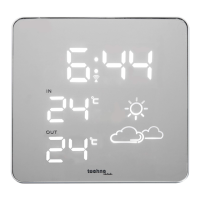


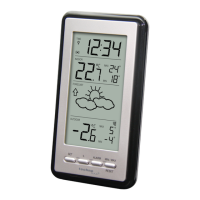
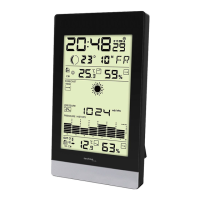
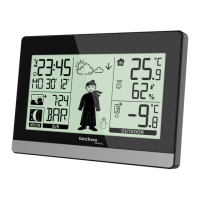
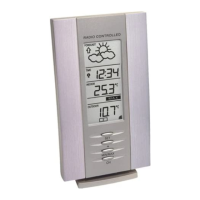
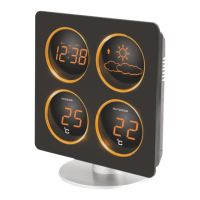
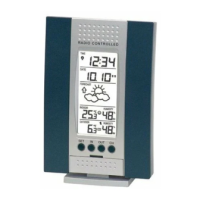
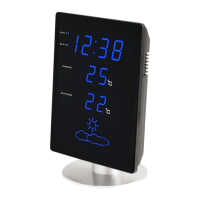

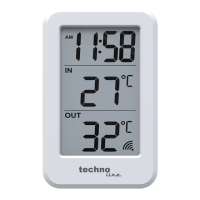
